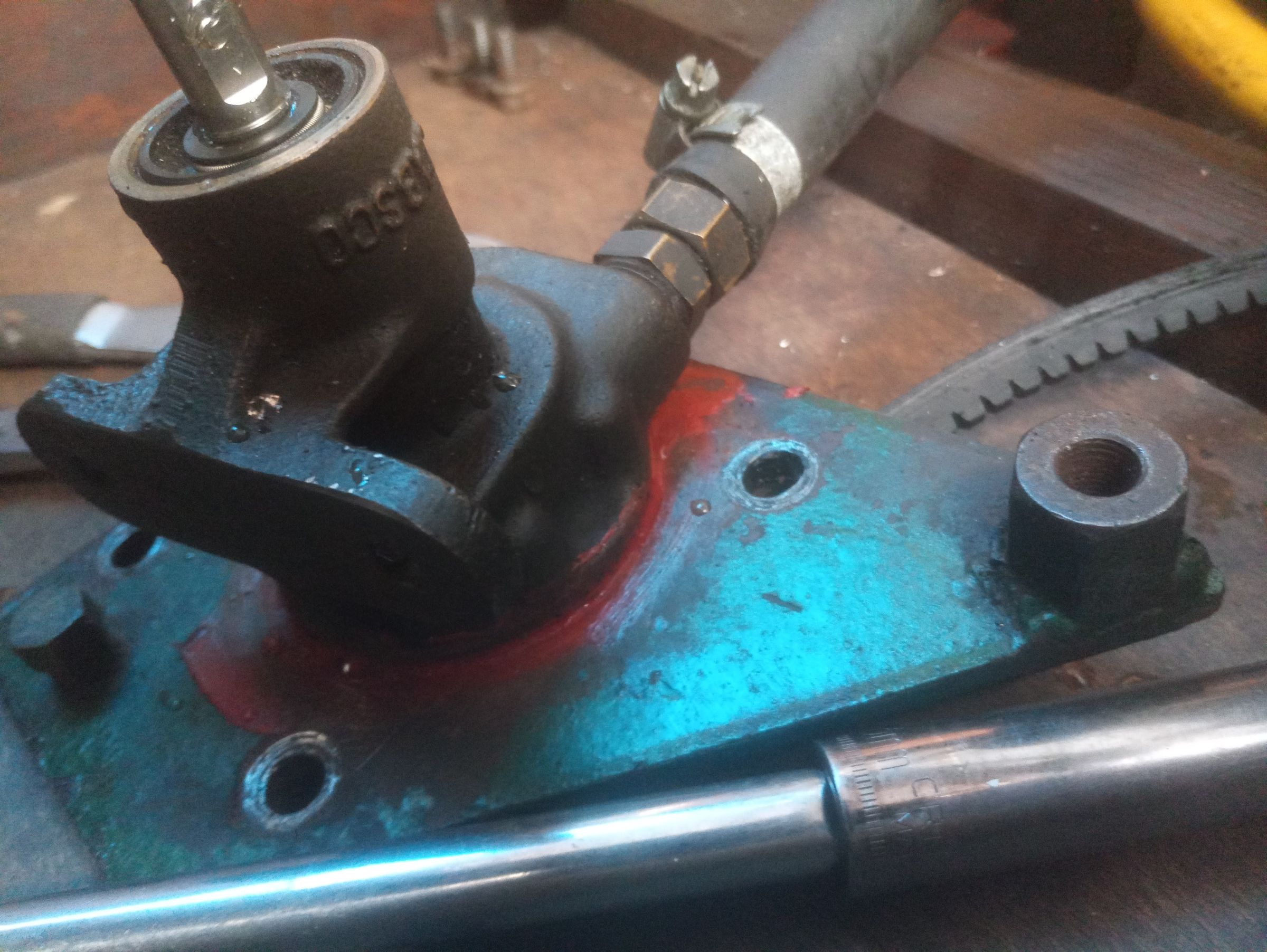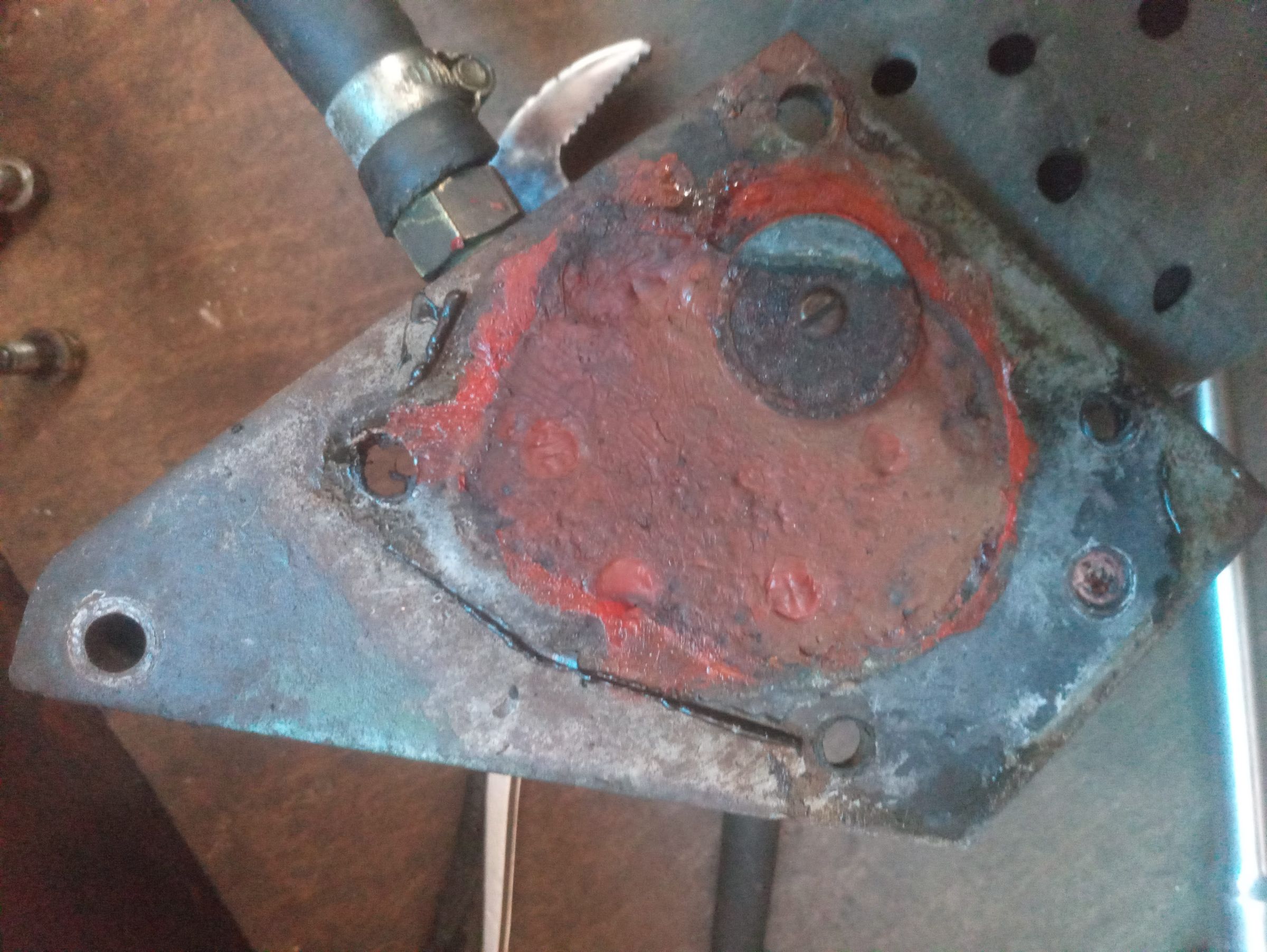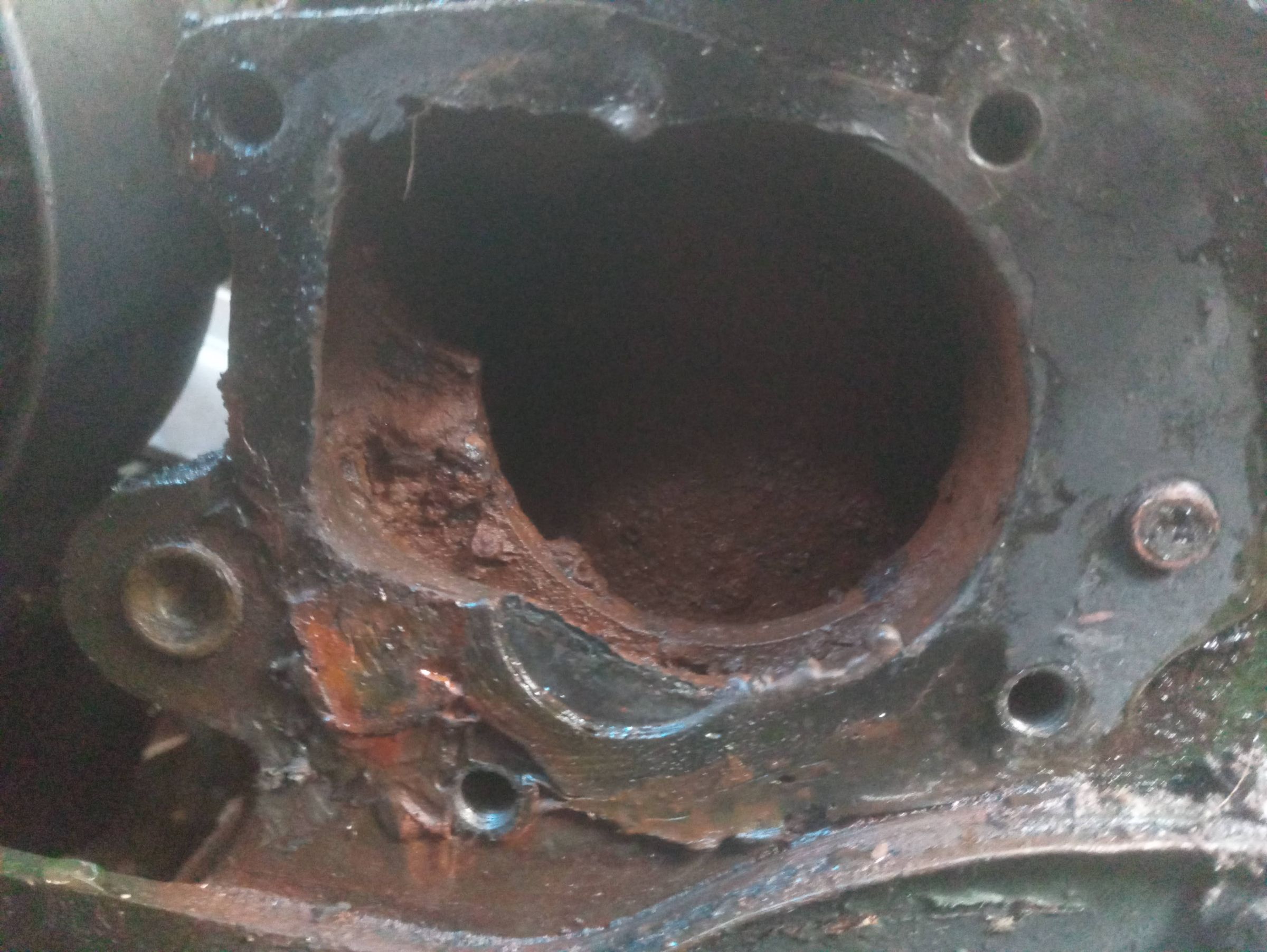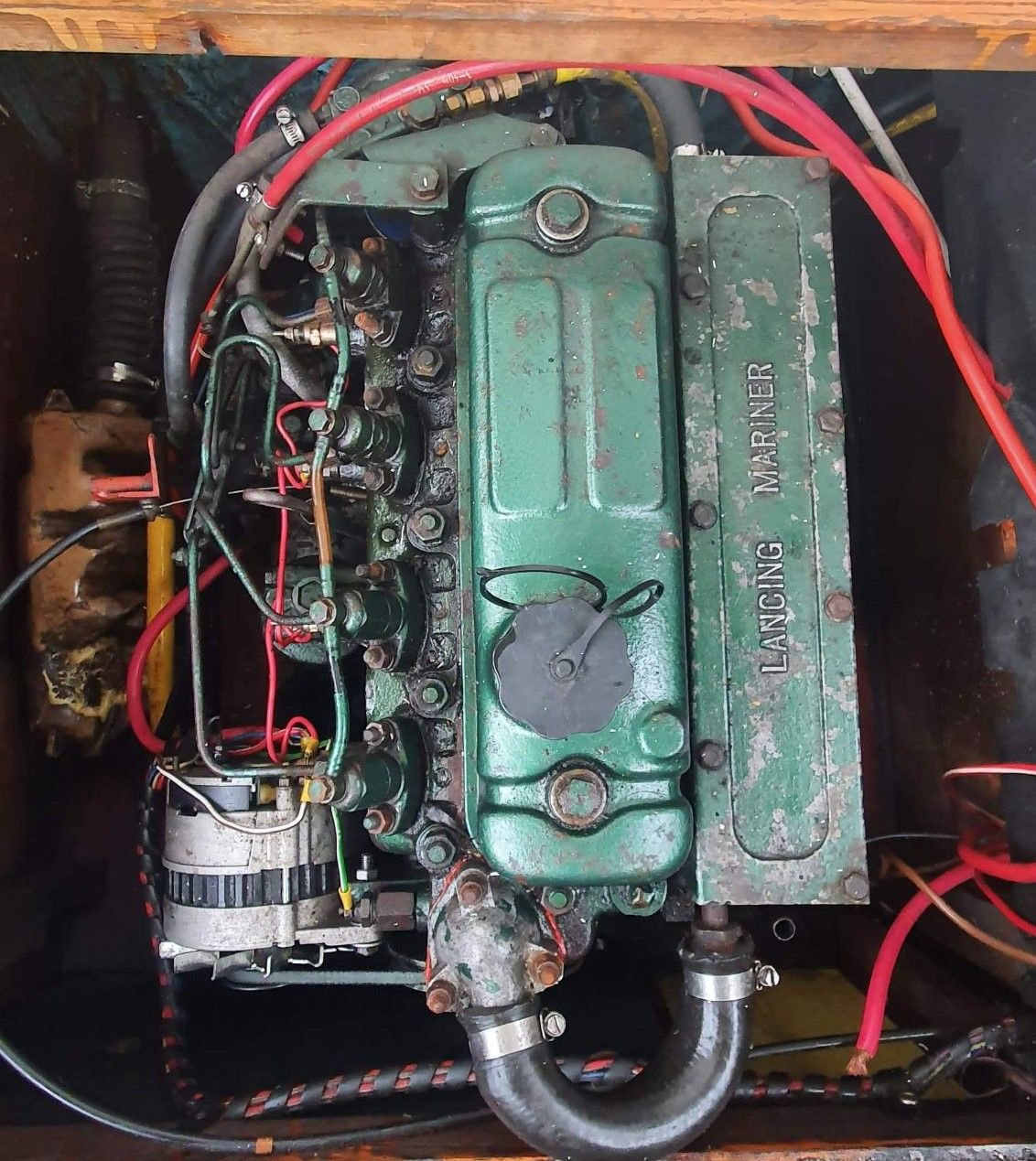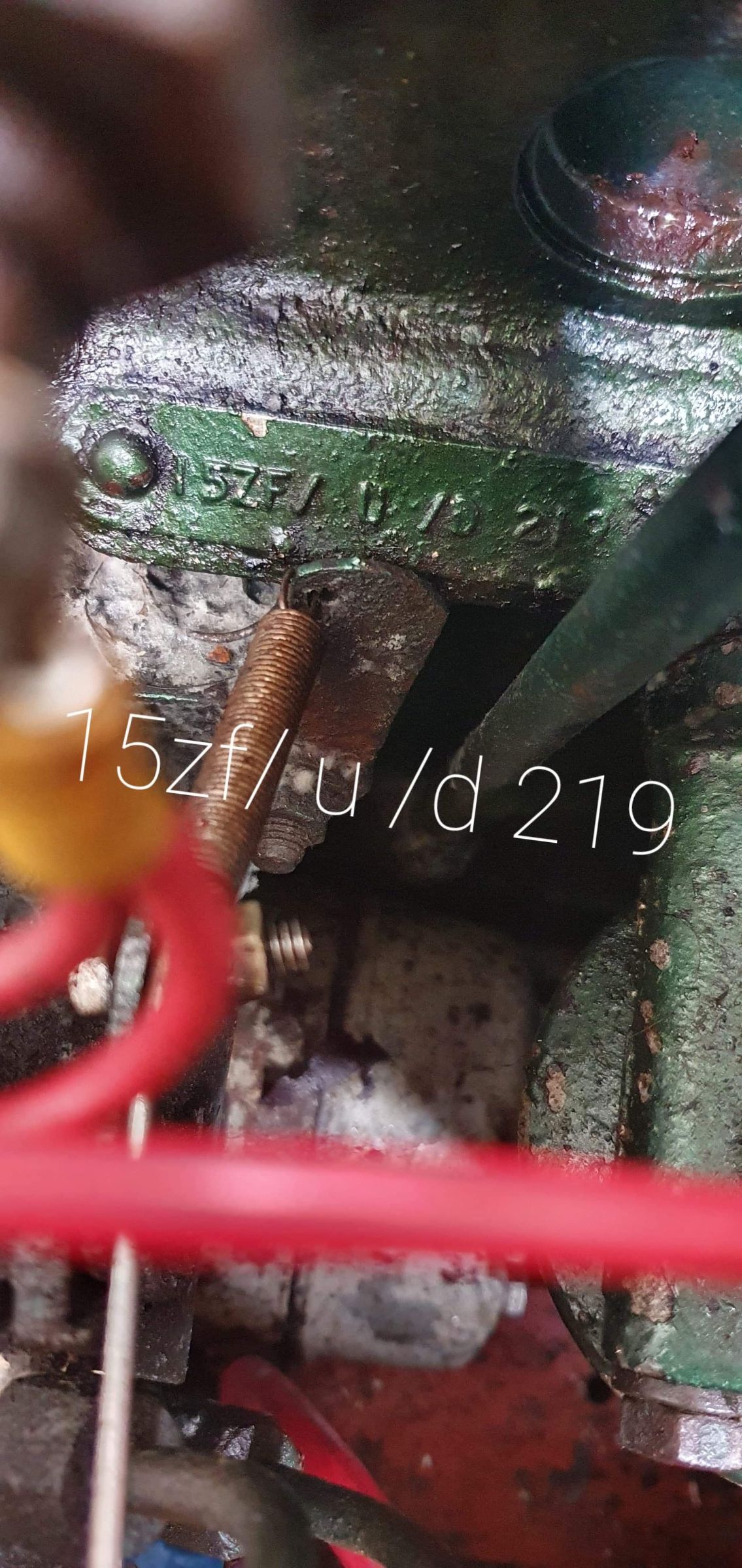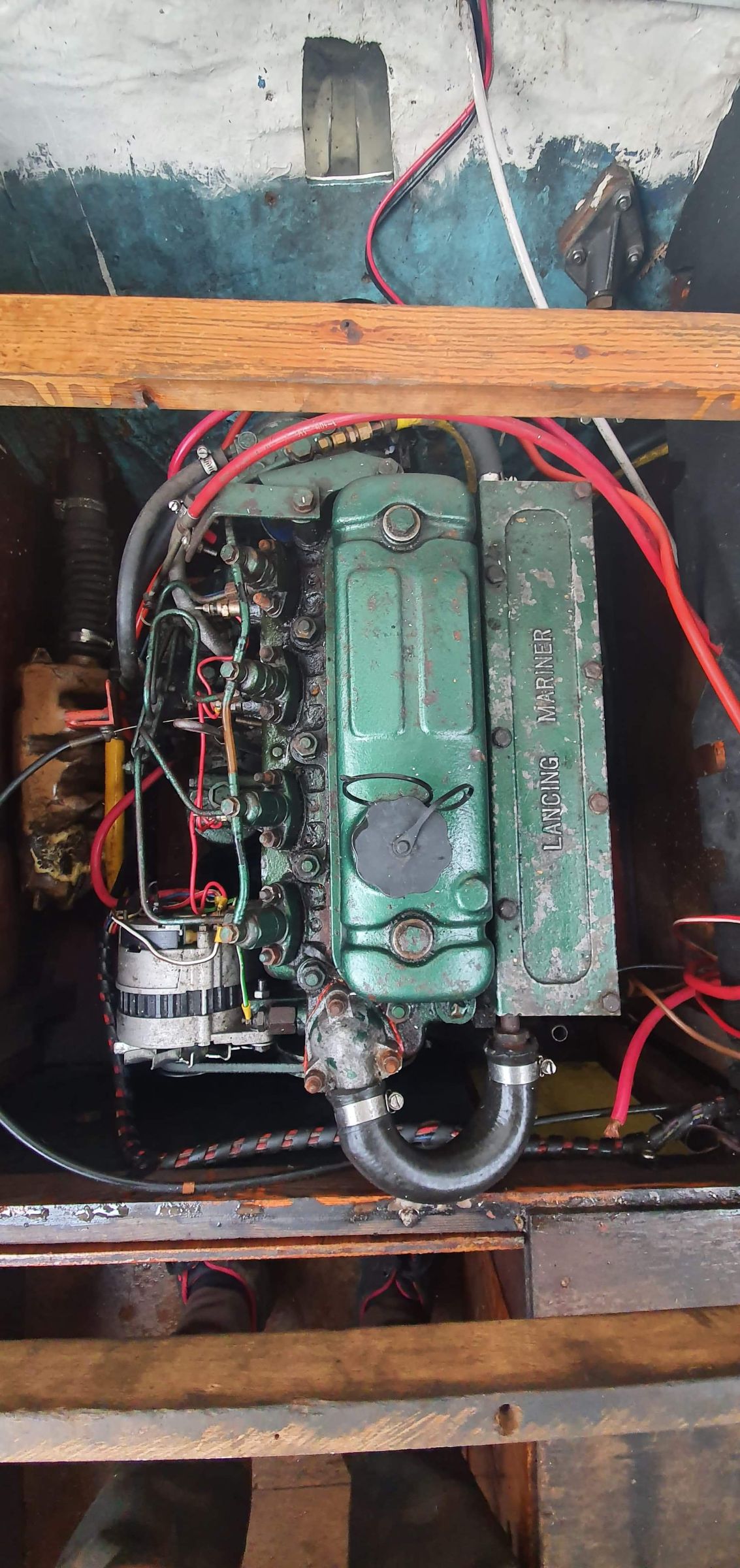

Frank30
Member-
Posts
12 -
Joined
-
Last visited
Profile Information
-
Gender
Male
Recent Profile Visitors
The recent visitors block is disabled and is not being shown to other users.
Frank30's Achievements
Gongoozler (1/12)
0
Reputation
-
Thanks Tony. It was those biggish bolt heads I was thinking of. So no good putting water in there..... I'll check what happens under the washer and the three-way pump!!?? It may work as presumably it did work at some point over time. Otherwise I'll be in the market for a mountable cooling pump and a small pulley. Thanks everyone for their input. I'll go up there in the next few days and do some tests and will report back. Regards, Chris
-
Quickly on the matter of the little open pipe by the front of the manifold - to my knowledge it is the crankcase breather pipe. Interestingly there's no obvious place for it to go. The air inlet manifold is not present and there is no hole/boss to connect to on the rocker cover. The main good thing about it is that no smoke/fumes seem to be coming out. It either shows that the underside of the engine is still in very good shape; or it has been blocked to make things look good. After a warm-up period the engine exhaust look pretty decent for an ancient engine.
-
Thanks Tony. In the original Lancing designer's (vague) description he mentions having a Jabsco mounted on the port side under the front of the manifold (presumably driven by a second crankshaft pulley) and water going into the block via the usual front water pump cavity and out via the thermostat housing into the big boss on the front of the manifold (using standard size radiator hose). For the initial period when the thermostat was closed they had a small gauge hose going from some extra orifice in the block (are there more than the standard drain-down hole which apparently is near the engine oil filter??) to the small boss at the back of the manifold. From memory my rig only has the one front pulley driving pump and alternator. I had a quick scout round for what may have been a recently disconnected small bore water jacket access, but saw nothing obvious. However on the port side at the back there are as many as 3 bolt heads going into the block and I don't know what they are to do with.... They're rather low down - possibly oil pressure relief?
-
PS - in another thread I posted a reply from one of the engineers at Lancing involved in the design of their direct cooled conversions. He gives an overview of the cooling circuit with a caveat that he can't remember it well over 50 years later. The description given of their standard water circuit does not tally with what I have. So mine might be an experiment from the Lancing works (given the half moon machined into the block under the water pump blanking plate); or a third party conversion.
-
Thankyou to all the contributors. I see some clever thoughts here. Just to summarise my lengthy post - there is no water circuit through the engine at the moment. The Jabsco pumps water directly to the bypass connection at the back of the manifold (small black hose) and thence out the exhaust. The washer on the back of the blanking plate is down tight at the moment and nothing would go past it. I'd initially guessed it was something to do with one of the pump mounting holes having a stripped thread, but I think Tony et. al. are right - it may have been an adaptation of the pump into a THREE WAY version. The hole could have been a specific size to limit the flow through the block in order to allow for the engine temperature to get to somewhere near normal. There is no thermostat fitted and I don't know if there ever was. The output side of the pump (not in photos) goes only to the back of the manifold (I had to take off that hose connection in order to get at one of the mounting bolts on the blanking plate). Obviously the output side of the pump allows much of the water to go down the bypass and prevents pump damage. Given the main pump output being a bypass I don't see a reason why a low temp thermostat could not be fitted. Any thoughts? I'm thinking of removing the washer, seeing what's underneath and if a hole does align with the pump output side I'll try the engine without the blocking washer. Possibly whoever replaced the impeller very recently was not familiar with the 3-way option and decided to block it off.... Can anyone think of any other options? Apologies for incomplete photos. Initially I took them for my own purposes. As the boat is 2.5 hrs drive away it's not too easy to get more.... Thanks, Chris
-
Gents - I am bewildered by the 'cooling' circuit of my recently acquired boat. The 'cooling circuit' does not include passing water through the block and head!! Surely enough, the thing overheats... Someone has mounted the Jabsco pump 'backwards' on a steel blanking plate that covers where the car engine water pump used to go. This plate was not a quick bodge, includes a welded-on boss for mounting the alternator etc. The usual Jabsco pump cover is missing and the pump face is screwed to the plate from the inner side. I can not for the life of me understand how the water was meant to circulate in the block. As you see in the photos the Jabsco pump sucks in raw water and pumps it to the bypass end of the manifold. The large boss on the front of the manifold is routed to the thermostat housing, but from there the whole engine is a dead end!! When I took off the pump/blanking plate no water came out. Before I get and old car pump to provide hose access into the block (without using this pump to pump coolant) and construct a bracket to mount a new Jabsco near the timing cover - can anyone think what might have been a logical reason for blanking-off the normal engine water input? I will add that the vendor had the impeller replaced and the mechanic splice/re-routed the hose from the Jabsco to go into the small bypass boss on the back of the manifold - from wherever it went before (but not the usual coolant input on the front of the block). Of course the whole system looks OK- lots of water coming out of the exhaust!!
-
Following is a copy of reply direct from Mike Bellamy of Lancing Marine, the designer of the direct cooling system on my boat. This may be of wider interest. =============================== Hi,Oh!This is old.The manifold is one that I made about 50 years ago, definitely early '70s, for the 1.5 with direct cooling.As far as I remember at this rather late stage, the water circuit was:-SeacockOil cooler(s)Jabsco pump mounted on the port front mount bracket.Into block, but I can't remember where we made the connection. Probably on to the circulation pump inlet, but I can't be sure.Out through the thermostat to the exhaust manifold that had an internal water injection port to cool the gas and enable use of exhaust hose.There was also a by-pass pipe from the cylinder block drain plug into another connection on the back of the exhaust manifold to provide a water flow when the stat was closed.All the connections I can see look to be as intended way back then.The sizes of the various parts were carefully selected to get appropriate water flow ratesAs it has worked for 50+ years, I suggest you just go through all connections and find out where the blockage is.
-
Thanks for thoughts on cooling fault options - useful stuff. Unexpectedly yesterday Lancing Marine did pick up the phone - after 4 failed attempts. I had to submit my issue in an email and soon got a detailed answer from the designer of these conversions. The work was done practically 50 years ago and Mike had trouble recollecting all the details, but I did get a very comprehensive answer. I have asked for permission to post the 'authorative' description of the Lancing direct cooled BMC 1500 on here. The solar/alternator charging system I'm sure can be sorted out satisfactorily. There are thousands of boats kitted out that way. Chris
-
For completeness (Tony Brooks) the exhaust emerges in the middle of the lower side of the cooled exhaust manifold into a piece of rubber exhaust hose that passes under the engine to the plastic silencer/muffler on the 'wrong' side. I have not figured out where the cooling water joins the exhaust gases. No obvious water-injecting exhaust elbow.....
-
Thanks again for all the inputs. Problem is boat is 2.5 hrs from home so difficult to get more pictures. Have owned 3 marine engines in yachts (rebuilt two of them) plus various outboards. This boat is not in fabulous order, but the price was right so I thought I'd give canals a go for my retirement.... I will get the make of outdrive from the owner though that apparently works OK. Lancing are not answering the phone for the moment. The engine only has one Jabsco-type circulating pump (in place of the conventional car/rad centrifugal pump) which had impeller issues back in the summer. Something to do with the thermostat housing was also repaired when the boat was used and overheated back in the summer. Probably lead to the partially melted plastic muffler (that has been patched with resin). The vendor is not clear what exactly was done during repair, but the problem was not entirely cured. The external cooling circulation is certainly a bodge/rats nest of cheap repairs and that will get remediated in the spring. Does anyone know if the block/head passages are likely to be scaled up badly from fresh water direct cooling over the decades? To the point of needing a strip down to clear them out? Lastly the free red wire does need isolating, but not a biggie. The vendor installed solar charging for the house battery and simply disconnected the wire from the alternator which now only charges the starting battery. Chris
-
Thank you Flyboy and Tracy D'arth for such prompt replies. I have no exact info on the transmission yet, but it is and outdrive (sterndrive?) Next thing that interests me is that there seems to be no visible inlet manifold or air filter. You can see the crankcase vent pipe sits there unconnected. The inlet would have been on the same side as the exhaust I presume and somehow tucked under the exhaust manifold?
-
Captains My first post on this forum. I'm in the process of buying a Norman 22' cruiser presumably from the 70's. There are issues with the ancient engine and the vendor does not know much about it. It ran in the summer evidently. He has provided the attached photo of what might be an engine number - 15zf/u/d219. The only other obvious factors are that it is now direct cooled and the manifold seems aluminium with "Lancing Mariner" cast into it. Can anyone help identify please? Chris

